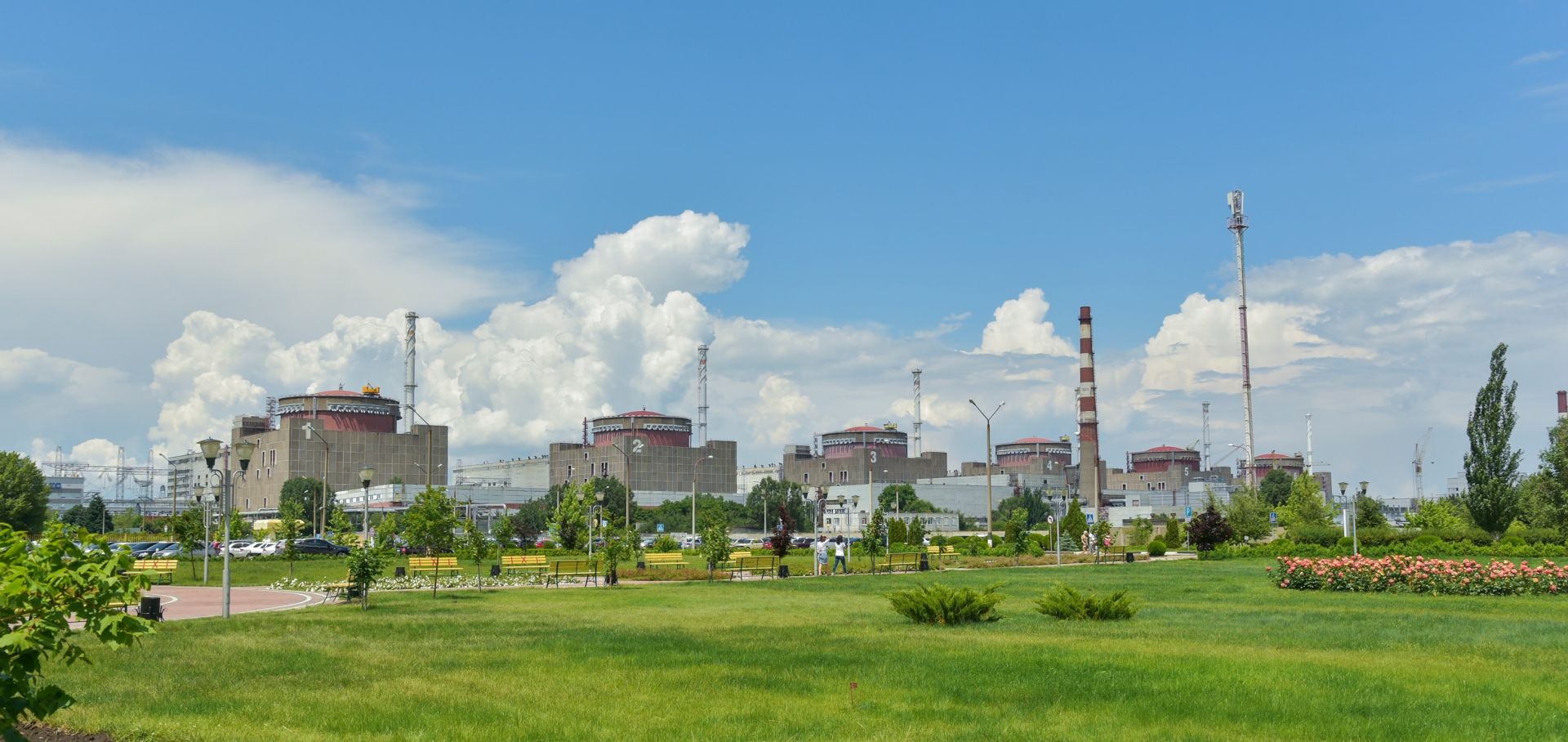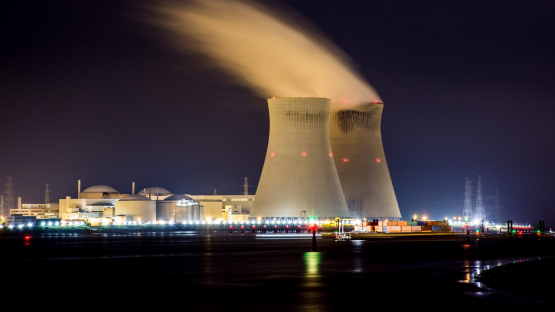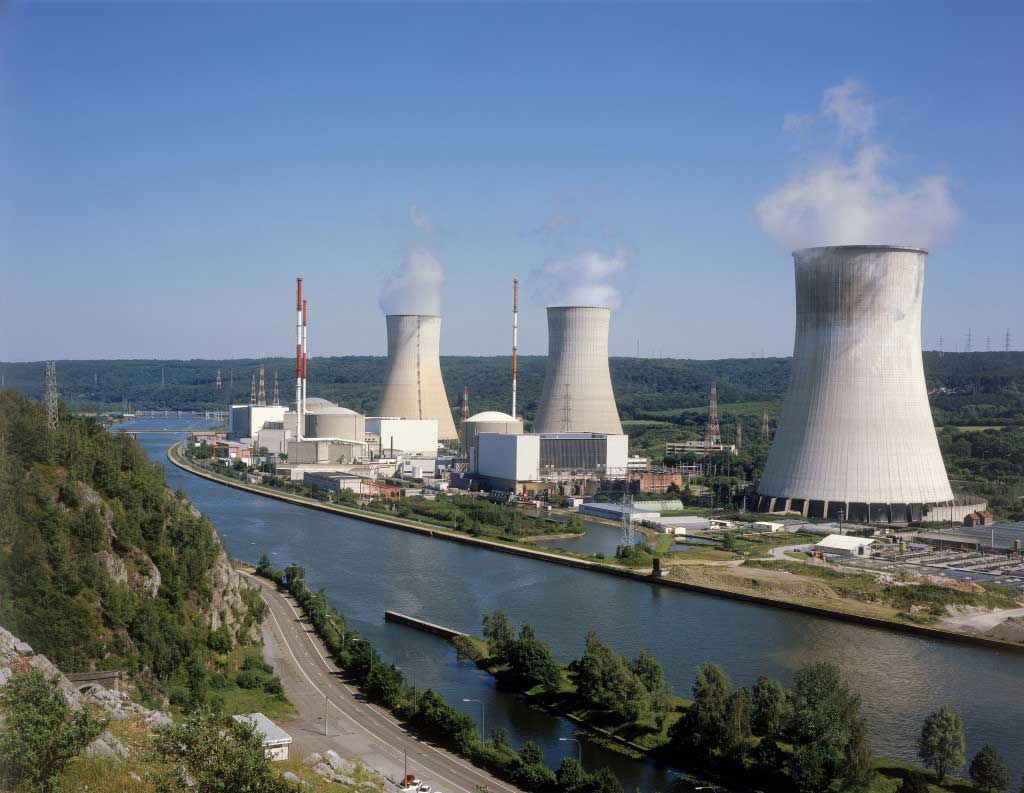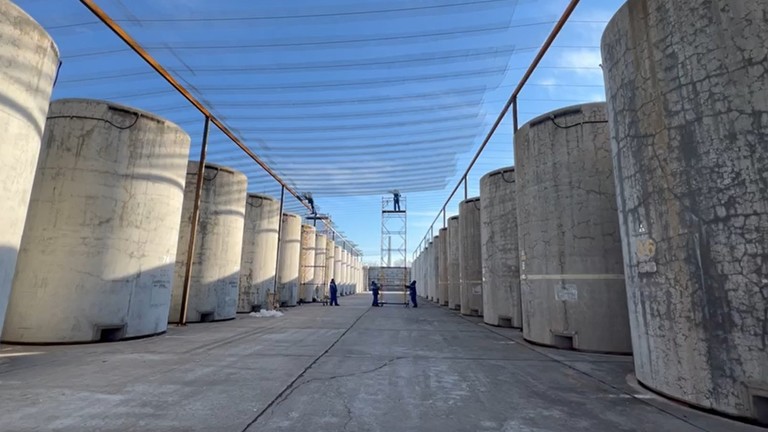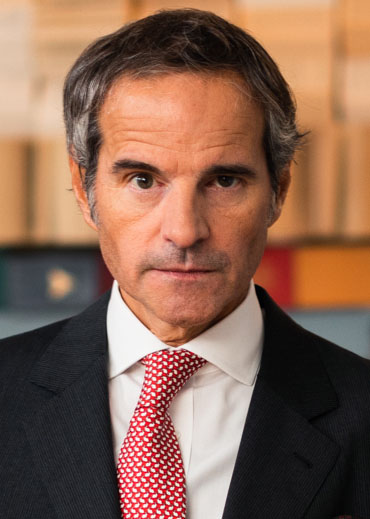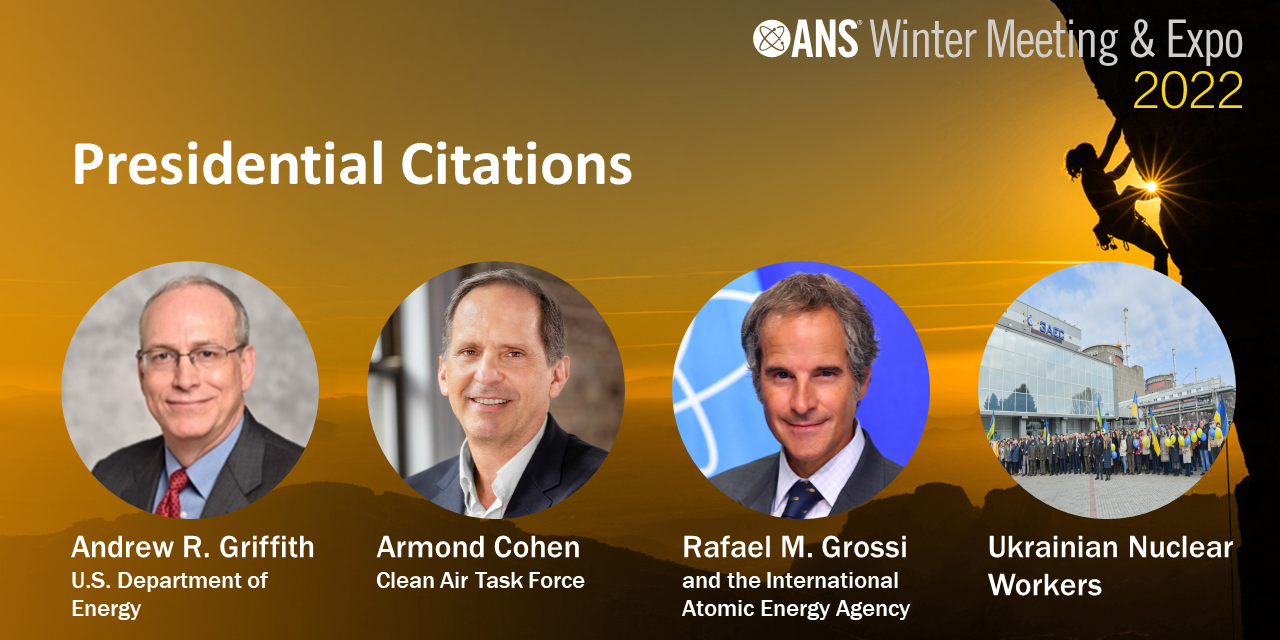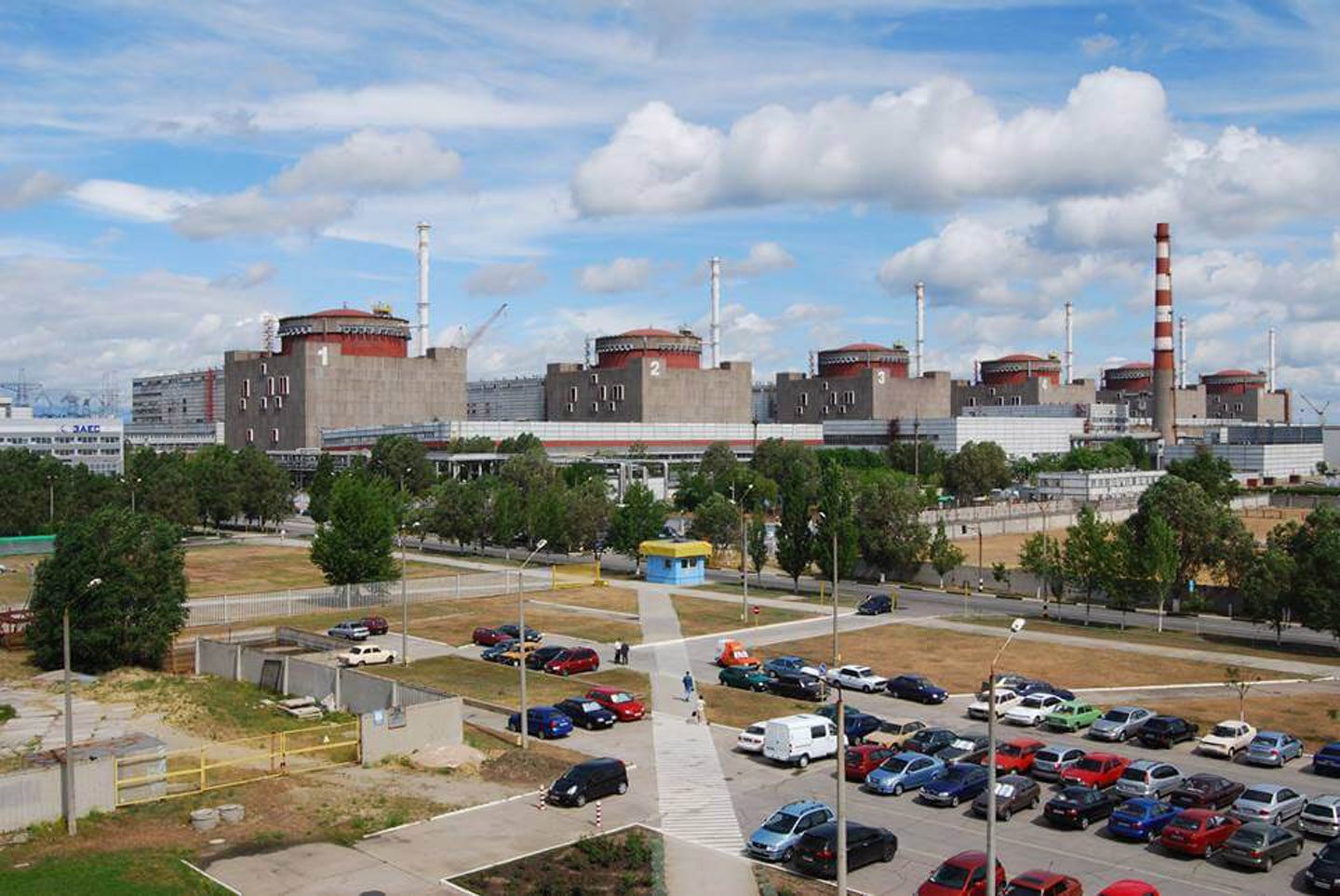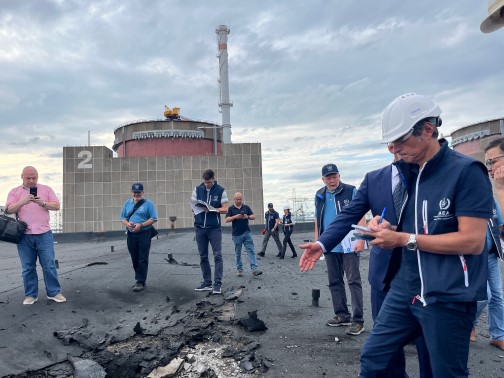The IAEA team of of nuclear safety, security, and safeguards experts inspecting damage last year at the Zaporizhzhia nuclear power plant. (Photo: Dean Calma/IAEA)
As the war in Ukraine enters its second year, the International Atomic Energy Agency has released Nuclear Safety, Security and Safeguards in Ukraine, an overview of the conflict’s impact on the beleaguered nation’s nuclear facilities and of the agency’s actions to lessen the likelihood of a nuclear accident.
The Zaporizhzhia plant (Image: Energoatom)
As if being stuck in the middle of a combat zone isn’t sufficiently nerve-racking, workers at Ukraine’s Zaporizhzhia nuclear power plant—under Russian occupation since last March—must now concern themselves with having access to enough water to keep the facility safe.
Belgium's Doel nuclear power plant. (Photo: N. Hippert/IAEA)
The Belgian government is exploring the idea of extending the operational life of its three oldest reactors by two years, a variety of news outlets are reporting.
Those reactors—Units 1 and 2 at the Doel facility and Unit 1 at Tihange, sporting a combined capacity of 1,852 MWe—were slated to be permanently shuttered in 2025 in keeping with the country’s nuclear phase-out policy.
The Tihange nuclear power plant. (Photo: Engie Electrabel)
Unit 2 at Tihange, one of Belgium’s two nuclear power plants, was permanently disconnected from the grid late on the evening (local time) of January 31, operator Engie Electrabel has announced.
The 1,008-MWe pressurized water reactor is the second unit in Belgium’s nuclear reactor fleet to be retired in accordance with the country’s 20-year-old law mandating a gradual phase-out of nuclear power. The first Belgian unit to be retired, Doel-3, a 1,006-MWe PWR, was shut down on September 23, 2022. Remaining in operation are Doel-1, -2, and -4 and Tihange-1 and -3.
This image from a video reportedly shows the start of installation of a protective covering over spent fuel storage tanks at the Zaporizhzhia nuclear power plant in Ukraine. (Image: Telegram/Vladimir Rogov)
Russia has begun construction of protected covering at Ukraine’s Zaporizhzhia nuclear power plant, according to a December 17 report from Russian news outlet RT. The story has been picked up in the West by some news agencies but has not been widely circulated.
Vladimir Rogov, a Russian-appointed official in Zaporizhzhia Oblast, said, “Russia is constructing a protective dome over spent radioactive fuel stores at the [Zaporizhzhia] nuclear power plant as Ukrainian forces continue to target the facility.”
The Zaporizhzhia nuclear power plant.
The International Atomic Energy Agency’s board of governors has adopted a resolution calling for an immediate end to the Russian occupation of Ukraine’s Zaporizhzhia nuclear power plant. According to a report from Reuters, the 35-member board voted 26–2 yesterday in favor of the resolution, with seven abstentions. The two “no” votes were cast, unsurprisingly, by Russia and China, while abstentions came from Burundi, Egypt, India, Pakistan, Senegal, South Africa, and Vietnam.
IAEA director general Rafael Mariano Grossi (at right) inspects damage at Ukraine’s Zaporizhzhia plant on September 1. (Photo: Fredrik Dahl/IAEA)
IAEA director general Rafael Mariano Grossi (center) with his team of nuclear safety, security, and safeguards experts at the Vienna International Airport on August 29, prior to their departure for Ukraine’s Zaporizhzhia nuclear power plant. (Photo: Dean Calma/IAEA)
After months of urgent entreaties to both the Ukrainian and Russian governments to allow the International Atomic Energy Agency access to the embattled Zaporizhzhia nuclear plant, IAEA director general Rafael Mariano Grossi yesterday set off for the facility, accompanied by a team of nuclear security, safety, and safeguards experts.
The Zaporizhzhia plant (Image: Energoatom)
Energoatom, Ukraine’s nuclear plant operator, is reporting that Units 5 and 6 at the Zaporizhzhia plant—currently the facility’s only operational reactors—were disconnected from the country’s power grid early in the morning of August 25.
The Zaporizhzhia site has been under the control of the Russian military since March 4, just days after Russia commenced its invasion of Ukraine.
The Zaporizhzhia nuclear power plant. (Photo: Ralf1969, Wikimedia Commons)
The latest news on Ukraine’s Zaporizhzhia nuclear power plant—under occupation by the Russian military since early March—sparks some hope, but also more anxiety.
The good: This morning, Russia requested that the United Nations Security Council hold a meeting tomorrow on the situation at the six-unit pressurized water reactor plant, according to RIA Novosti, a Russian state-owned news agency. The RIA report cited a post via the Telegram messaging app from Dmitry Polyansky, Russia’s first deputy minister at the UN. In the post, Polyansky said the meeting is scheduled for “22:00 Moscow time on August 23.”




_(52340771440).jpg)
